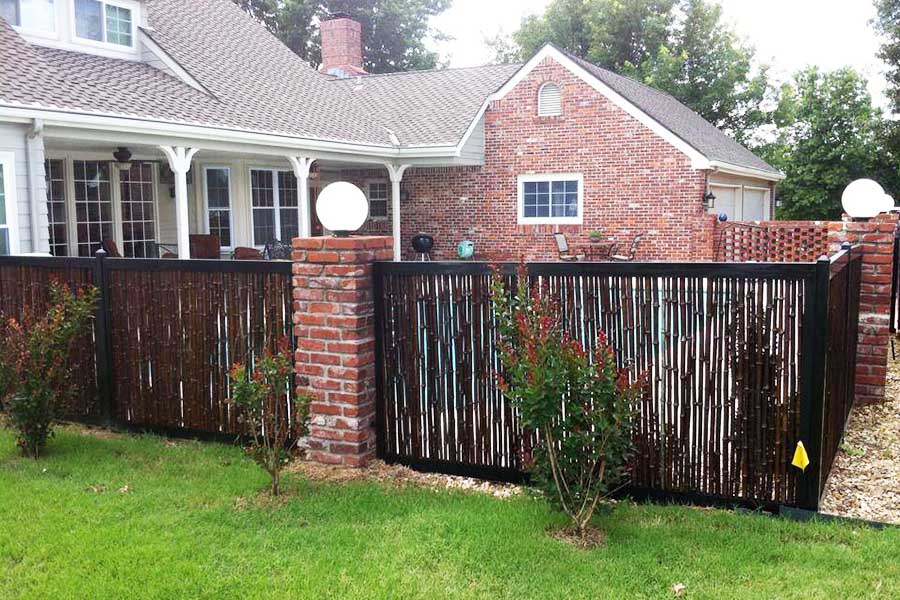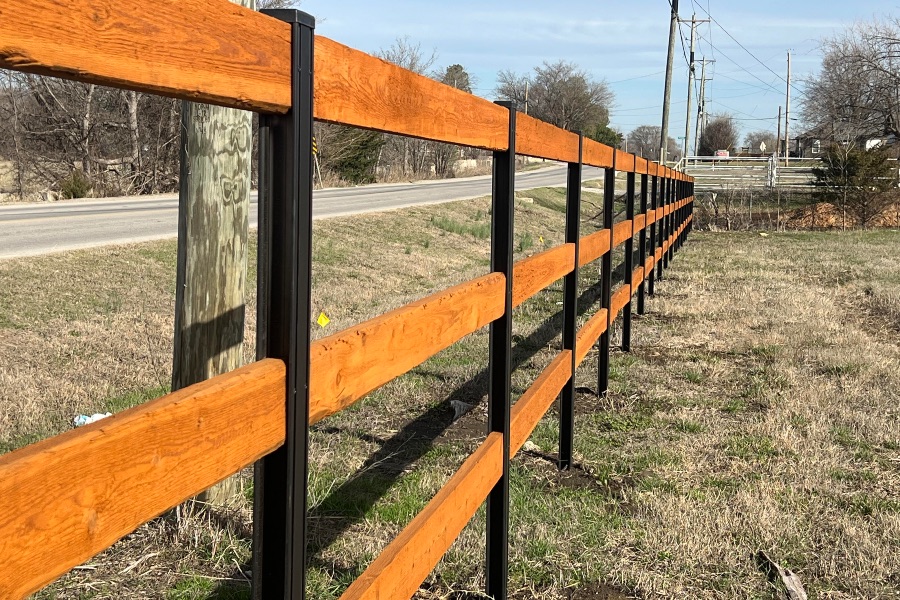All Categories
Featured
Over time, however, even the best fences can start to show indications of wear and tear. While small problems can usually be repaired, there are certain caution indications that suggest it's time to replace your fencing altogether.
Extreme weather, such as heavy tornados, strong winds, or snow, can trigger severe damages to your fencing. Damaged panels, bent articles, or dropped areas are clear indications that your fence may not be as durable as it as soon as was. While small damages can be repaired, if the fencing has been significantly impacted by extreme weather condition, a replacement might be more economical than attempting to fix it. Furthermore, a fencing that has actually been harmed by storms could be at risk of more degeneration, specifically if it is currently showing indications of aging.
Wooden fencings, specifically those in areas with high moisture or constant rainfall, are susceptible to rot and decay. If you observe soft areas in the wood, discoloration, or a moldy smell, these are all indicators of rot. Rot can spread out swiftly and deteriorate the fence's structural integrity, bring about a collapse if not dealt with. In many cases, areas of the fence may be replaced, but extensive rot may show that the entire fencing requires changing. Wood fencings that have endured rot can also draw in pests like termites, which can additionally endanger the fencing's security.
A fence that is no longer standing upright or has started to lean to one side is a considerable issue. Leaning frequently happens when the fencing blog posts are damaged or have moved in the ground. This can be the result of poor installment, shifting dirt, or water damage. If your fencing is leaning or tilting, it is essential to analyze whether the damages is reparable or if the fencing needs a full substitute. Oftentimes, once a fence begins to lean, it can be challenging to repair successfully without changing the messages or the entire framework.
Pests like termites, carpenter ants, or rodents can cause substantial damage to wood fences. Termites, particularly, can burrow the wood, weakening the framework and leading to possible collapse. If you notice indicators of pests, such as small openings, tunnels, or wood that is soft to the touch, it may suggest a severe infestation. While pest control treatments can assist deal with the problem, the damage they leave behind typically calls for changing affected areas of the fence. If the infestation prevails, it may be necessary to change the entire fencing to avoid further damages.
While fading and discoloration may not influence the architectural integrity of your fencing, it can affect the overall look of your residential or commercial property. If the fading is serious or if the fence is revealing other signs of degeneration, replacing the fence might be the finest method to improve your home's aesthetic charm.
![]()
If you discover on your own continuously fixing areas of your fence, maybe a sign that the structure is no more holding up well. Small concerns like loose nails, missing out on slats, or damaged boards can commonly be taken care of with a fast fixing. If you're consistently making repair work, it's worth thinking about whether it might be a lot more affordable to replace the fencing totally. A fencing that needs regular upkeep can also be a safety and security issue, especially if the repairs are just temporary and do not attend to underlying architectural issues.
Like all exterior structures, fences have a minimal life expectancy. A properly maintained fencing can last for years, but ultimately, even the toughest fencings will certainly show indicators of aging. If your fencing is over 15-- 20 years old and showing signs of wear such as drooping, splitting, or warping, it might be time for a substitute. Older fences may also no longer satisfy modern requirements for protection or aesthetic appeals, and changing them can provide your home a fresh brand-new look while boosting functionality.
![]()
The key features of a fencing are to supply safety and security and privacy. If your fence is no more doing these tasks-- whether because of damage, height issues, or simply outdated layout-- it may be time to replace it. A fence that is no much longer safeguard can be a safety and security danger for both your building and family, and an absence of privacy could reduce the convenience of your outside areas. In such cases, replacing the fencing with a newer, stronger layout can supply the defense and satisfaction you require.
Final Thought
A fence that is harmed, aging, or no more offering its designated objective can dramatically influence the security, privacy, and look of your property. By being conscious of the indicators that indicate your fencing needs substitute-- whether it's due to extreme damage, parasite invasions, leaning, or age-- you can make certain that your home remains secure and visually pleasing. Consistently evaluate your fencing and resolve any type of problems immediately. If your fence is revealing numerous of these signs, take into consideration replacing it with a brand-new, sturdy fencing that will offer satisfaction for several years to find.
- Extreme Weather Condition Damage
Extreme weather, such as heavy tornados, strong winds, or snow, can trigger severe damages to your fencing. Damaged panels, bent articles, or dropped areas are clear indications that your fence may not be as durable as it as soon as was. While small damages can be repaired, if the fencing has been significantly impacted by extreme weather condition, a replacement might be more economical than attempting to fix it. Furthermore, a fencing that has actually been harmed by storms could be at risk of more degeneration, specifically if it is currently showing indications of aging.
- Rotten or Broken Wood
Wooden fencings, specifically those in areas with high moisture or constant rainfall, are susceptible to rot and decay. If you observe soft areas in the wood, discoloration, or a moldy smell, these are all indicators of rot. Rot can spread out swiftly and deteriorate the fence's structural integrity, bring about a collapse if not dealt with. In many cases, areas of the fence may be replaced, but extensive rot may show that the entire fencing requires changing. Wood fencings that have endured rot can also draw in pests like termites, which can additionally endanger the fencing's security.
- Leaning or Tilting Fence
A fence that is no longer standing upright or has started to lean to one side is a considerable issue. Leaning frequently happens when the fencing blog posts are damaged or have moved in the ground. This can be the result of poor installment, shifting dirt, or water damage. If your fencing is leaning or tilting, it is essential to analyze whether the damages is reparable or if the fencing needs a full substitute. Oftentimes, once a fence begins to lean, it can be challenging to repair successfully without changing the messages or the entire framework.
- Insect Infestations
Pests like termites, carpenter ants, or rodents can cause substantial damage to wood fences. Termites, particularly, can burrow the wood, weakening the framework and leading to possible collapse. If you notice indicators of pests, such as small openings, tunnels, or wood that is soft to the touch, it may suggest a severe infestation. While pest control treatments can assist deal with the problem, the damage they leave behind typically calls for changing affected areas of the fence. If the infestation prevails, it may be necessary to change the entire fencing to avoid further damages.
- Fading and Discoloration
While fading and discoloration may not influence the architectural integrity of your fencing, it can affect the overall look of your residential or commercial property. If the fading is serious or if the fence is revealing other signs of degeneration, replacing the fence might be the finest method to improve your home's aesthetic charm.
- Regular Repair Work

If you discover on your own continuously fixing areas of your fence, maybe a sign that the structure is no more holding up well. Small concerns like loose nails, missing out on slats, or damaged boards can commonly be taken care of with a fast fixing. If you're consistently making repair work, it's worth thinking about whether it might be a lot more affordable to replace the fencing totally. A fencing that needs regular upkeep can also be a safety and security issue, especially if the repairs are just temporary and do not attend to underlying architectural issues.
- Age of the Fencing
Like all exterior structures, fences have a minimal life expectancy. A properly maintained fencing can last for years, but ultimately, even the toughest fencings will certainly show indicators of aging. If your fencing is over 15-- 20 years old and showing signs of wear such as drooping, splitting, or warping, it might be time for a substitute. Older fences may also no longer satisfy modern requirements for protection or aesthetic appeals, and changing them can provide your home a fresh brand-new look while boosting functionality.

- Lowered Security and Personal Privacy
The key features of a fencing are to supply safety and security and privacy. If your fence is no more doing these tasks-- whether because of damage, height issues, or simply outdated layout-- it may be time to replace it. A fence that is no much longer safeguard can be a safety and security danger for both your building and family, and an absence of privacy could reduce the convenience of your outside areas. In such cases, replacing the fencing with a newer, stronger layout can supply the defense and satisfaction you require.
Final Thought
A fence that is harmed, aging, or no more offering its designated objective can dramatically influence the security, privacy, and look of your property. By being conscious of the indicators that indicate your fencing needs substitute-- whether it's due to extreme damage, parasite invasions, leaning, or age-- you can make certain that your home remains secure and visually pleasing. Consistently evaluate your fencing and resolve any type of problems immediately. If your fence is revealing numerous of these signs, take into consideration replacing it with a brand-new, sturdy fencing that will offer satisfaction for several years to find.
Latest Posts
Seamless Bathroom Renovations by Bath Fitter
Published Jan 15, 25
0 min read
Reliable Roofing Services by A-Abel Roofing
Published Jan 15, 25
1 min read
Signs That Your Fencing Needs Substitute: Key Indicators to Look For
Published Jan 15, 25
0 min read